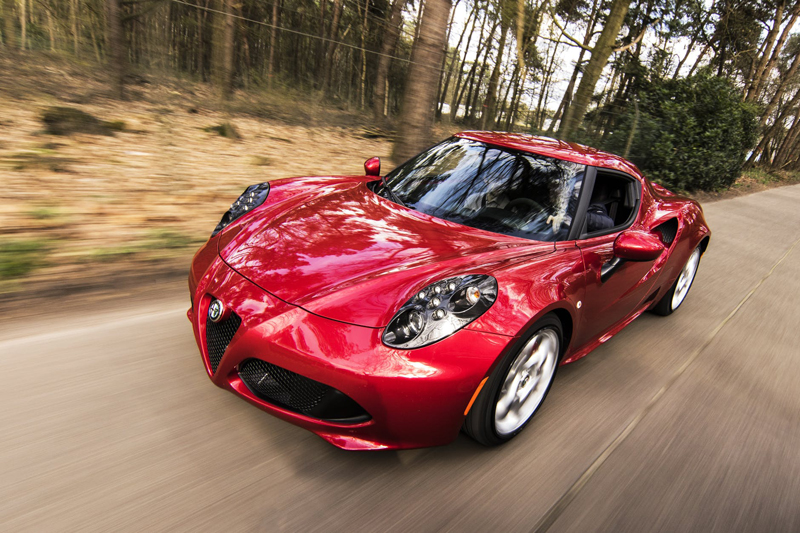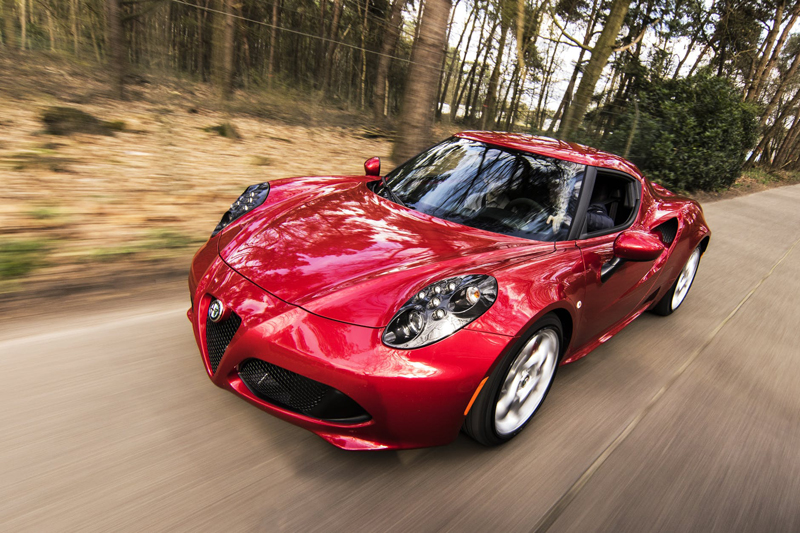Car Washing and Waterless Car Wash Tips

Driveway Water Carwash: Use a shut off nozzle to conserve precious water resources! (Washing a car correctly in the driveway without causing micro scratches is harder than you think!) Use only a car specific shampoo that is pH balanced. Never use household dish soap, it will attack and remove the natural moisturizers in paint and plastic parts, causing the paint and plastic to become more susceptible to scratches and UV deterioration.
ALWAYS USE high quality automotive microfiber towels to dry with, there is a difference! Natural chamois are OK if you know how to properly use and maintain them otherwise they can cause micro scratches (spider webbing).
Use two wash mitts—I recommend microfiber wash mitts, one dedicated to the lower parts of the car that are the dirtiest, the other dedicated mitt is for the more visible parts of the car---this prevents accidentally rubbing grit into more visible parts of the car finish.
Use two buckets—one for lower gritty parts and the other for the higher more visible parts of the car.
Modern Waterless Car Wash: They don’t need a drop of water from the garden hose! Premium waterless car wash formulas not only safely remove road grit and grime without scratching the paint and without hose water, the best ones even leave the paint protected with an acrylic polymer sealant…ALL IN ONE STEP! Premium Waterless Car Wash formulas are cost effective usually less than a fancy Star Bucks and for that you get a clean car and protected in less than 15 minutes and you can do it in your nice clothes without getting wet or dirty!!
Helpful Definitions:
Clear Coat: Top layer of paint which is clear. All vehicles since approx. 1990 have a clear coat. This technology was developed to make car finishes more durable and clear coats are a different formulation than the color or base coat. Clear coats “typically” are much harder than the base color coat. Commonly referred to in the industry as“two stage” paint finish.
Primer: This is the first layer of paint applied directly to the metal.
Spider Scratch (cobwebs): Micro scratches most noticeable on hoods and trunks on sunny days. They are a sign of paint neglect, improper carwash technique, automatic car washing, wiping the paint surface when dry with a towel to “clean” it.
Swirls: Sometimes referencing “spider scratches” , but technically “swirl” references improper polishing machine technique and swirls are very different than spiders. Sometimes the swirls can look “halographic”.
Rubbing Compound: Very aggressive formula usually not clear coat safe. Used incorrectly can cause damage to the clear coat. Pros refer to it as a “cutting compound” ,used in conjunction with wet sanding and rotary polisher.
Polish: Polishes are designed to remove clear coat scratches and defects.
Diminishing Polish (Nano formula): This is a new category of polish usually very expensive and typically only Pro’s have access to. The polish starts out as a certain abrasive grit and then as it is applied it breaks down into finer particles. Nano formulas are so superior that great results can be had by hand or with a professional machine.
Paint Sealant: Advanced synthetic polymer formula designed for extended protection on paint finishes. Usually protects for 6-12 months and is superior to ordinary carnauba wax. Typically applied by a Pro, however it can be done by consumers at home very easily.
Wax: Typically, a true wax is designed to protect the paint finish not remove scratches. Read the directions to see if it has a cleaner (mild polish) that can remove very minor imperfections. Most ordinary auto wax lasts 4-6wks.
Cleaner: Sometimes found as a one step wax and paint oxidation remover. This type of product will usually fall short on removing scratches. It mainly intended to restore lightly oxidized dull paint.
Oxidation: This refers to a dull looking finish that has been neglected. Oxidation in many cases can be corrected if the clear coat is still intact.
How to safely remove a dried bird dropping, tree sap or dried bug spat on paint. Naturally, you want to remove them as soon as possible, the longer it dries on the paint the more damage it can cause. Mineral spirits, Rubbing alcohol or WD-40 are just three household items that will work. None of them will harm a car paint finish. Simply spray or dab it on let it set for a few minutes…DO NOT RUB OR SCRAPE IT…let the solvent do the work… Use only a microfiber towel and dab to pick up the debris. Discard the microfiber towel after, you will not be able to clean it effectively. When the job is done, always wash the car with a quality car wash shampoo, dry and finally use a paint sealant on the affected areas, since all wax protection is removed by the solvents.
ALWAYS USE high quality automotive microfiber towels to dry with, there is a difference! Natural chamois are OK if you know how to properly use and maintain them otherwise they can cause micro scratches (spider webbing).
Use two wash mitts—I recommend microfiber wash mitts, one dedicated to the lower parts of the car that are the dirtiest, the other dedicated mitt is for the more visible parts of the car---this prevents accidentally rubbing grit into more visible parts of the car finish.
Use two buckets—one for lower gritty parts and the other for the higher more visible parts of the car.
Modern Waterless Car Wash: They don’t need a drop of water from the garden hose! Premium waterless car wash formulas not only safely remove road grit and grime without scratching the paint and without hose water, the best ones even leave the paint protected with an acrylic polymer sealant…ALL IN ONE STEP! Premium Waterless Car Wash formulas are cost effective usually less than a fancy Star Bucks and for that you get a clean car and protected in less than 15 minutes and you can do it in your nice clothes without getting wet or dirty!!
Helpful Definitions:
Clear Coat: Top layer of paint which is clear. All vehicles since approx. 1990 have a clear coat. This technology was developed to make car finishes more durable and clear coats are a different formulation than the color or base coat. Clear coats “typically” are much harder than the base color coat. Commonly referred to in the industry as“two stage” paint finish.
Primer: This is the first layer of paint applied directly to the metal.
Spider Scratch (cobwebs): Micro scratches most noticeable on hoods and trunks on sunny days. They are a sign of paint neglect, improper carwash technique, automatic car washing, wiping the paint surface when dry with a towel to “clean” it.
Swirls: Sometimes referencing “spider scratches” , but technically “swirl” references improper polishing machine technique and swirls are very different than spiders. Sometimes the swirls can look “halographic”.
Rubbing Compound: Very aggressive formula usually not clear coat safe. Used incorrectly can cause damage to the clear coat. Pros refer to it as a “cutting compound” ,used in conjunction with wet sanding and rotary polisher.
Polish: Polishes are designed to remove clear coat scratches and defects.
Diminishing Polish (Nano formula): This is a new category of polish usually very expensive and typically only Pro’s have access to. The polish starts out as a certain abrasive grit and then as it is applied it breaks down into finer particles. Nano formulas are so superior that great results can be had by hand or with a professional machine.
Paint Sealant: Advanced synthetic polymer formula designed for extended protection on paint finishes. Usually protects for 6-12 months and is superior to ordinary carnauba wax. Typically applied by a Pro, however it can be done by consumers at home very easily.
Wax: Typically, a true wax is designed to protect the paint finish not remove scratches. Read the directions to see if it has a cleaner (mild polish) that can remove very minor imperfections. Most ordinary auto wax lasts 4-6wks.
Cleaner: Sometimes found as a one step wax and paint oxidation remover. This type of product will usually fall short on removing scratches. It mainly intended to restore lightly oxidized dull paint.
Oxidation: This refers to a dull looking finish that has been neglected. Oxidation in many cases can be corrected if the clear coat is still intact.
How to safely remove a dried bird dropping, tree sap or dried bug spat on paint. Naturally, you want to remove them as soon as possible, the longer it dries on the paint the more damage it can cause. Mineral spirits, Rubbing alcohol or WD-40 are just three household items that will work. None of them will harm a car paint finish. Simply spray or dab it on let it set for a few minutes…DO NOT RUB OR SCRAPE IT…let the solvent do the work… Use only a microfiber towel and dab to pick up the debris. Discard the microfiber towel after, you will not be able to clean it effectively. When the job is done, always wash the car with a quality car wash shampoo, dry and finally use a paint sealant on the affected areas, since all wax protection is removed by the solvents.

Editor's Picks Articles
Top Ten Articles
Previous Features
Site Map
Content copyright © 2023 by Marie A. Stroman. All rights reserved.
This content was written by Marie A. Stroman. If you wish to use this content in any manner, you need written permission. Contact Marie A. Stroman for details.





